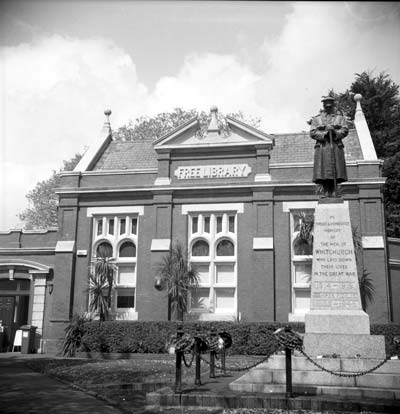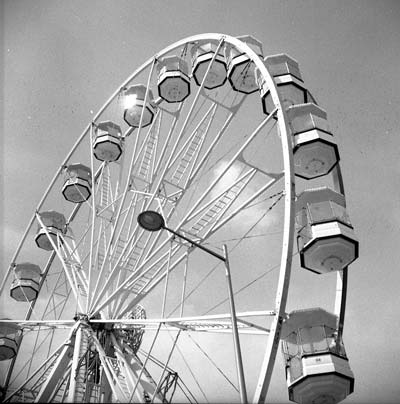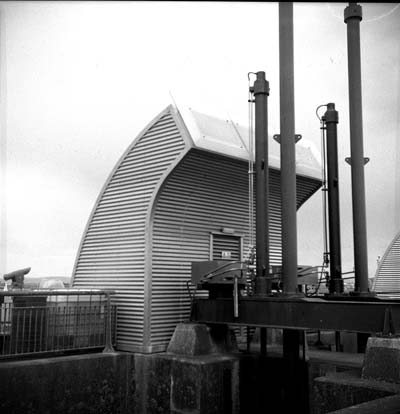Montanus DelMonta
Specification

| Manufacturer | : | Montanus |
|---|---|---|
| Produced | : | 1954 - 1959 |
| Classification | : | Medium Format |
| Body Type | : | Twin lens reflex |
| Construction | : | Metal |
| Film Type | : | 120 |
| Film Width | : | 62mm |
| Image Size | : | 6 x 6 cm |
| No. of Images | : | 12 |
| Lens Type | : | Pluscanar Anastigmat |
| Focal Length | : | 75mm |
| Focus Type | : | Variable |
| Focal Range | : | 4ft - inf. |
| Aperture Type | : | Iris |
| Apertures | : | f/3.5 - f/22 |
| Shutter Type | : | Velio |
| Shutter Speeds | : | T,B, I(1/200s - 1/10s) |
| Size Open (w x h x d) | : | 98 x 202 x 97 mm |
| Size Closed (w x h x d) | : | 98 x 148 x 97 mm |
| Weight | : | 663g |
Description
The Delmonta is a Twin Lens Reflex camera made out of metal and plastic. It takes 12, 6cm square, images on 120 film. The large viewfinder lens (f/3.2) produces a bright image on the ground glass screen. There is a magnifying glass that can be flipped into place to check focussing. The front of the viewfinder also drops down to produce a simple 'sports finder'. It was also sold as the Atlantic Olympia in Sweden.
A large knob on the left hand side of the camera is used for focussing. When this is turned, a plate that supports the main lens and the viewfinder lens moves forward and backward to achieve focus. The focus dial has markings indicating the depth of field for various aperture settings. The aperture range is f/3.5 to f/22. It can focus between 4ft and infinity.
The Velio shutter is capable of shutter speeds varying from 1/200s down to 1/10s. The shutter has to be set before it is released. The shutter release is not coupled to the frame advance, so double exposure is possible. It has a screwed terminal to accept a cable release.
The camera supports flash photos with a pc socket for synchronization.
Under the shutter release button, there is a special housing to store an additional exposed or unexposed film.
Film advance is indicated by a red window which has a sliding cover.
How to Use
The highest speed (1/200s) is probably no longer accurate and may run slow. This would lead to overexposure.
If you don't want to bother with an exposure meter, follow the guide shown. It is based on the 'Sunny 16' rule. Film is so forgiving and will produce acceptable results even when overexposed by 2 or 3 stops or underexposed by 1 stop.
Remember that the exposure guide in the camera user manual may not be helpful as it is based on the use of old film with a low ISO value.
The tables assume that the sun is at least 30 degrees above the horizon - that's 10am - 5pm on a summer's day in the UK.
If you are not sure about the light level, err on the side of overexposure - i.e. assume the smaller f number.
Where there is a choice, a larger f number will give a larger depth of field.
For the slower speeds, you may need a tripod to stop blur through shake.
Using ISO 100/125 film
| Weather Conditions | Shadow Detail | Shutter Speed (s) | ||
|---|---|---|---|---|
| 1/25 | 1/50 | 1/100 | ||
 Sunny SunnySnow/Sand | Dark with sharp edges | - | - | f/22 |
 Sunny Sunny | Distinct | - | f/22 | f/16 |
 Slight Overcast Slight Overcast | Soft around edges | f/22 | f/16 | f/11 |
 Overcast Overcast | Barely visible | f/16 | f/11 | f/8 |
 Heavy Overcast Heavy Overcast | None | f/11 | f/8 | f/5.6 |
 Open Shade Open Shade/Sunset | None | f/8 | f/5.6 | f/4 |
Photographs taken with this Camera
Using Ilford FP4+ 120 film. Developed in D76(1+1)



